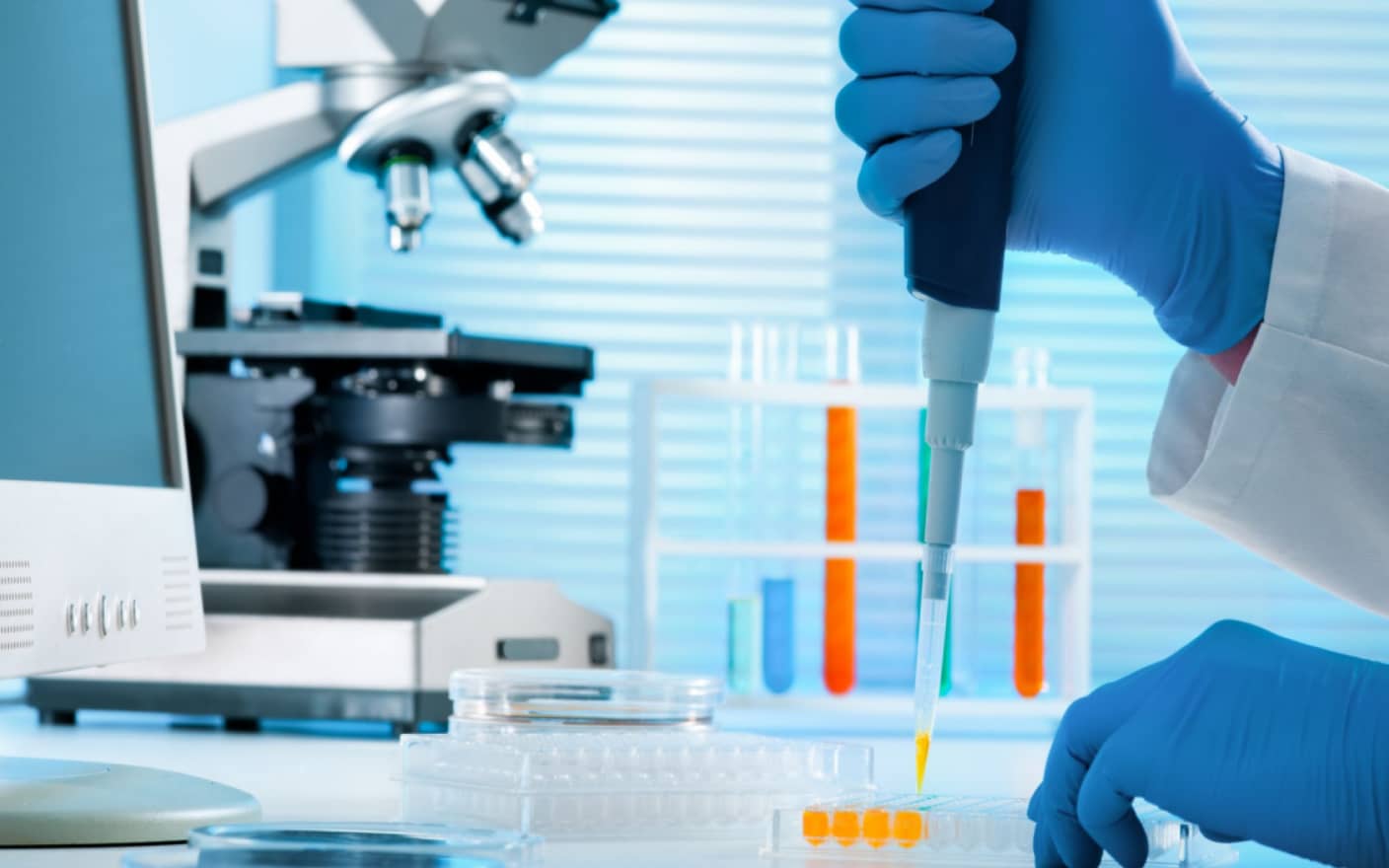Minimizing hemolysis is crucial in pharmacokinetic (PK) research, which plays a fundamental role in the drug discovery and development process. PK research seeks to elucidate the absorption, distribution, metabolism, and excretion (ADME) of drugs within a living organism. However, the accuracy of these experimental results is frequently compromised by various factors, with hemolysis often being overlooked despite its significant impact. Hemolysis, the rupture of red blood cells releasing hemoglobin and other intracellular components into the plasma, can substantially alter the ADME processes of drugs. This article focuses on minimizing hemolysis by strategically selecting and optimizing vehicles and additives. It systematically explores the causes, assessment methods, and selection strategies in preclinical PK studies, providing a scientific basis for experimental design and result interpretation.
Why Does Hemolysis Matter?
In preclinical pharmacokinetic (PK) studies, hemolysis has a profound impact on both animal physiology and the bioanalysis of PK samples.
From a physiological perspective: hemolysis can induce a range of adverse effects, including acute hemolytic reactions, systemic inflammation, and immune activation in animals. These responses can lead to electrolyte imbalances, metabolic disturbances, oxidative stress, organ dysfunction, compromised cardiovascular function, renal impairment, and other health issues[1,2]. Such physiological changes can indirectly alter the absorption, distribution, metabolism, and excretion (ADME) processes of drug candidates, thereby affecting the overall outcome and reliability of PK studies.
From the bioanalysis of PK samples : hemolysis can significantly impact the bioanalysis of PK samples by disrupting drug stability and increasing the presence of cellular components in plasma, such as free hemoglobin, which can interfere with analytical methods. It can affect drugs with a high affinity for red blood cells by releasing them into the plasma, skewing concentration measurements. Similarly, drugs with high plasma binding rates may be affected due to altered protein binding dynamics. Hemolysis can introduce analytical interferences, complicate metabolite profiling by introducing additional cellular enzymes and substrates, and cause sample dilution, affecting the accuracy of quantitative measurements[3,4].
These factors collectively underscore the importance of preventing hemolysis during sample collection and processing to ensure the reliability and accuracy of PK studies.
What Causes Hemolysis and How to Prevent Hemolysis
Hemolysis can result from various causes, including sample collection, handling and processing factors, environmental and equipment factors, animal-related factors, and drug-related factors. Each cause necessitates different systematic interventions to minimize hemolysis. For instance, during sample processing, the selection of vehicle proportion and additive ratio requires a stepwise experimental design to identify a safe additive ratio that prevents hemolysis. This careful approach is essential in preclinical PK experiments to ensure the accuracy and reliability of the results.
Table 1. Summary of Common Causes of Hemolysis in Blood Samples and Solutions [5,6].
Primary Factor | Category | Specific Cause | Prevention/Solution |
Collection & Handling | Blood Draw Techniques | Overly fine needles; repeated punctures; excessive vacuum pressure |
|
Sample Processing | Violent agitation; abrupt temperature changes; improper centrifugation |
| |
Additives | Excessive concentration or inappropriate additive type |
| |
Environment & Equipment | Transport Conditions | Continuous vibration |
|
Consumable Quality | Unevenly siliconized blood collection tubes; expired reagents |
| |
Animal-Related Factors | Pathological Status | Underlying diseases (e.g., liver/kidney dysfunction) |
|
Drug-Related Factors | Physicochemical Properties | Abnormal osmolarity or pH |
|
Injection Components | Inappropriate ratio of organic solvents (e.g., DMSO, PG) |
| |
Drug Effects | Organismal immune response r direct cell membrane damage |
|
Commonly Used Hemolysis Assessment Methods
Accurate quantification of hemolysis is crucial for the safety study of vehicles associated with drug candidates. At WuXi AppTec DMPK, two methods are commonly employed for hemolysis assessment: visual inspection using a color card and UV spectrophotometry. Visual inspection is a simple and rapid method, making it suitable for the preliminary screening of numerous hemolytic samples. In contrast, UV spectrophotometry provides quantitative detection, which helps avoid manual errors due to human factors and offers more precise hemolysis detection. Together, these complementary methods enhance the reliability of hemolysis assessment in safety studies.
Table 2. Commonly Used Methods for Hemolysis Assessment [7-9].
Detection Method | Advantages | Disadvantages | Suitable Scenarios |
Visual Inspection | Simple, quick | Subjective, low sensitivity | Preliminary screening |
UV Spectrophotometry | High sensitivity, quantitative analysis | Requires specialized equipment | Precise laboratory detection |
Direct Red Blood Cell Counting | Directly reflects red blood cell count | Complex operation, time-consuming | Acute or severe hemolysis research |
Hemoglobin Determination | High sensitivity, quantitative analysis | Requires specialized reagents and equipment | Precise laboratory detection |
Flow Cytometry | High sensitivity, multi-parameter analysis | Expensive equipment, complex operation | High-precision hemolysis research |
Electrochemical Method | High sensitivity, real-time monitoring | Requires specialized equipment | Laboratory research or real-time monitoring |
ELISA | High sensitivity, high specificity | Complex operation, high cost | High-sensitivity detection or biomarker analysis |
Preventing Hemolysis: Safe Vehicle Selection
For intravenous administration, the selection of appropriate vehicles is crucial to prevent hemolysis. Based on the literature[10] and actual usage, five common vehicles were chosen for evaluation: Propylene Glycol (PG), Dimethyl Sulfoxide (DMSO), Dimethylacetamide (DMAC), N-Methyl-2-pyrrolidone (NMP), and Ethanol (EtOH). Different concentrations of these vehicles were tested using beagle dogs as the animal model. Samples were collected and hemolysis rates were measured 5 minutes post-administration.
Hemolysis was assessed using visual inspection and UV spectrophotometry after intravenous bolus injection. According to internal color card standards and referencing CLSI H21-A5/CAP guidelines, a hemolysis rate of 0.5% was used as the threshold to determine hemolysis. If the hemolysis rate exceeded 0.5%, it was recorded as hemolysis for further reference and optimization.
UV Spectrophotometry for Hemolysis Rate Detection:
To detect hemolysis rates accurately, whole blood was collected and centrifuged to obtain red blood cells. These cells were mixed with pure water in varying proportions and subjected to repeated vertexing and freeze-thaw cycles to completely rupture the red blood cells, creating samples with different hemolysis rates. A Nanodrop spectrophotometer was used to measure the optical density (OD) of these samples, allowing for the plotting of standard curves of hemolysis rate against OD. These curves were then used to detect the hemolysis rates of unknown samples, ensuring precise and reliable hemolysis assessment.

Figure 1. Hemolysis Rate of Different Concentrations of PG Aqueous Solutions
Experimental results have shown that hemolysis rates increase with the amount of PG administered intravenously. Therefore, it is important to control PG intake in routine experiments to ensure the safety of the vehicle. By carefully regulating the amount of PG used, we can minimize the risk of hemolysis and enhance the reliability and safety of our experimental outcomes. This finding underscores the need for careful consideration and optimization of vehicle concentrations in preclinical studies.

Figure 2. Mitigating PG-Induced Hemolysis with Saline
In efforts to alleviate the hemolytic response caused by PG, experiments were conducted using saline as a solvent instead of sterile water. The results indicated that using 40% PG in saline reduced the hemolysis rate by 40% compared to the same concentration in water after intravenous injection. This finding suggests that, where drug solubility allows, saline can effectively replace sterile water to mitigate PG-induced hemolysis, highlighting an important consideration in vehicle selection for intravenous formulations.
To further enhance drug solubility in the development of intravenous formulations, additional cosolvents are often used alongside PG. In this context, comparative studies were conducted on four common cosolvents to identify optimal combinations that can maintain drug solubility while minimizing hemolytic effects.

Figure 3. Comparison of Hemolysis Rates for Different Cosolvents
Exploring Cosolvent OptionsExperimental results indicated that the hemolysis rate, ranked from highest to lowest, was observed with DMSO DMAC, EtOH, and NMP. Notably, NMP exhibited the lowest hemolysis rate, suggesting better safety and making it a preferred choice for combining with PG in vehicle selection due to its lower hemolysis rate.
Building on extensive prior experimental results, WuXi AppTec DMPK has summarized safe usage proportions of common vehicles and established a comprehensive safety database for single vehicle use. This database serves as a valuable reference for vehicle selection during experimental scheme design, providing recommended usage proportions of various common vehicles to ensure the safety and reliability of experiments.
Preventing Hemolysis: Verification of Safe Additive Proportions
Referencing literature [15], whole blood was used as the experimental subject to maintain matrix consistency and eliminate background effects while covering the highest dynamic range. Whole blood with saline served as a negative control, and various additives were introduced to whole blood samples from different species. These samples were then centrifuged to prepare plasma, and the OD value was measured using a Nanodrop spectrophotometer. Due to differences in cell membrane composition, cell morphology, and antioxidant capacity across species, positive controls were selected based on actual conditions, and the hemolysis ratio (HR%) was calculated using a specific formula:

Using dogs as a model, hemolysis experiments were conducted with the desorption agent Triton X-100 to screen for positive controls. As illustrated in Figure 4, the OD value increased with Triton X-100 concentration until reaching a plateau. Additionally, Figure 5 shows that plasma color prepared with Triton X-100 concentrations of 0.125% or higher did not deepen, and no significant red blood cell sedimentation was observed at the bottom. Therefore, blood with 0.125% Triton X-100 in saline was used as a positive control for dog hemolysis experiments. The same methods were applied to other species in the experiment to obtain appropriate positive controls.

Figure 4. OD Values at Different Triton X-100 Concentrations (Male Beagle Dog)

Figure 5. Plasma Color Comparison at Different Triton X-100 Concentrations (Male Beagle Dog)
According to ISO medical material biological evaluation standards and ASTM standards, hemolysis is deemed to have occurred if the hemolysis rate (HR) exceeds 5%. Therefore, a 5% benchmark was set to determine the hemolysis threshold of Triton X-100 across different species. By adding various additives to whole blood from different species, the hemolysis threshold for each species was determined through the aforementioned hemolysis experiments. This process ultimately led to the establishment of a safe library for additive use. This library serves as a valuable reference during the development of pharmacokinetic (PK) study methods, ensuring that additives achieve desorption and compound stabilization while avoiding the impact of hemolysis, thereby ensuring the accuracy of experimental data.
Concluding Remarks
Minimizing hemolysis is a critical factor that cannot be ignored in pharmacokinetic research, as it can significantly impact experimental results. Through systematic analysis of hemolysis's impact on PK studies, several key conclusions have emerged:
Vehicle Optimization: Selecting vehicles with a low risk of hemolysis, such as N-Methyl-2-pyrrolidone (NMP), or optimizing vehicle proportions, such as replacing pure water with saline, can significantly reduce hemolysis rates. This approach ensures the accuracy and reliability of PK experiments. Case studies further confirm that adjusting vehicle combinations and administration volumes can successfully mitigate hemolysis risks, facilitating smooth experiment progress. WuXi AppTec DMPK has established effective hemolysis detection methods and a safety library for various vehicle uses, thereby preventing hemolysis during vehicle selection.
Additive Control: By referencing the additive safety library, it is possible to rationally select additive types and proportions to avoid hemolysis interference in detection results. This careful selection process ensures the accuracy of drug PK parameters in DMPK studies.
Comprehensive Prevention and Control: From study design to sample handling, continuous monitoring of hemolysis risk is essential to ensure data reliability. WuXi AppTec DMPK has developed comprehensive analysis strategies for hemolytic samples, assisting clients in their drug development processes. This support helps promote the acquisition of quality-controlled drug molecules, ensuring the safety and efficacy of clinical drug use.
Authors: Shengnan Duan, Tiantian Dang, Weimin Hu, Lili Xing, Linlin Pei, Chao Zhang, Jacob Zhi Chen, Shoutao Liu
Talk to a WuXi AppTec expert today to get the support you need to achieve your drug development goals.
Committed to accelerating drug discovery and development, we offer a full range of discovery screening, preclinical development, clinical drug metabolism, and pharmacokinetic (DMPK) platforms and services. With research facilities in the United States (New Jersey) and China (Shanghai, Suzhou, Nanjing, and Nantong), 1,000+ scientists, and over fifteen years of experience in Investigational New Drug (IND) application, our DMPK team at WuXi AppTec are serving 1,600+ global clients, and have successfully supported 1,700+ IND applications.
Reference
[1] Rother RP, Bell L, Hillmen P, et al. The clinical sequelae of intravascular hemolysis and extracellular plasma hemoglobin: a novel mechanism of human disease. JAMA. 2005, 293(13):1653-62.
[2]Gladwin MT, Kim-Shapiro DB. The functional nitrite reductase activity of the heme-globins. Blood. 2008, 112(7):2636-47.
[3] Tan A, Gagné S, Lévesque IA, et al. Impact of hemolysis during sample collection: how different is drug concentration in hemolyzed plasma from that of normal plasma? Journal of chromatography. B, Analytical Technologies in the Biomedical and Life Sciences. 2012, 901:79-84.
[4] Zheng Xin, TangYao, Wang Zhe, et al. Strategies for dealing with hemolyzed samples in LC-MS/MS bioanalysis. Chinese Journal of Pharmaceutical Analysis, 2018, 38(11): 2000-2007.
[5] Heireman L, Van Geel P, Musger L, et al. Causes, consequences and management of sample hemolysis in the clinical laboratory[J]. Clinical Biochemistry, 2017, 50(18): 1317-1322.
[6] McCaughey, E. J., Vecellio, E., Lake, R, et al. Key factors influencing the incidence of hemolysis: A critical appraisal of current evidence[J]. Critical Reviews in Clinical Laboratory Sciences. 2016,54(1):59–72.
[7] Franzyk H, Helgesen E, Booth JA, et al. Optimization of the Hemolysis Assay for the Assessment of Cytotoxicity. Int J Mol Sci. 2023, 24(3):2914.
[8] V. Han, K. Serrano, D. V. Devine . A comparative study of common techniques used to measure haemolysis in stored red cell concentrates[J].2010,98(2):116-123.
[9] ISO 10993-4. Biological evaluation of medical devices-part12: selection of tests for interactions with blood annexes D [S].1993.
[10] Amin, K., Dannenfelser, R.-M. (2006). In Vitro Hemolysis: Guidance for the Pharmaceutical Scientist. Journal of Pharmaceutical Sciences, 95(7), 1173-1176.
[11] Smith, J. K., Lee, H., & Brown, R. T. (2018). Hemolytic Potential of Tween 20 in Pharmaceutical Formulations. Journal of Pharmaceutical Sciences, 107(8), 2120-2128.
[12] J. E. Repasky et al. Calpain-mediated proteolysis of erythrocyte membrane proteins: Role in cellular aging. Blood, 1994.
[13] T. T. Rohn et al. Membrane perturbations induced by PMSF: A mechanism for cell lysis. Biochimica et Biophysica Acta (BBA) - Biomembranes, 1998
[14] S. R. Thomas et al. The Role of Calcium in Erythrocyte Membrane Stability. Biochimica et Biophysica Acta (BBA) - Biomembranes, 1997.
[15] Sæbø I P, Bjørås M, Franzyk H, et al. Optimization of the hemolysis assay for the assessment of cytotoxicity[J]. International journal of molecular sciences, 2023, 24(3): 2914
Related Services and Platforms




Stay Connected
Keep up with the latest news and insights.











